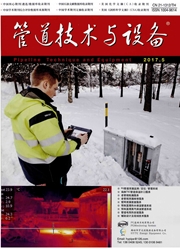

 中文摘要:
中文摘要:
以国内东部某油田的含蜡原油输油管道为研究对象,首先应用PIPEPHASE软件中的黑油网络模型计算出"热力条件允许最小输量"和"管道特性允许最小输量",以确定管道最小输量。然后针对该管道即将进入低输量运行阶段的实际情况,分析了各种常用保障技术的可行性,并结合经济投入与生产管理2个方面的要求,通过对比优选出含水输送工艺,采用起点联合站掺水输送、终点联合站进行油水分离和污水处理,并扩建污水深度处理站的方案,以确保该管道的安全经济运行。
 英文摘要:
英文摘要:
The waxy crude oil pipeline of an oilfield in east China is taken as an example in this paper,and its minimum through-put is determined after the calculation of the allowed minimum through-put of both the thermal condition and the pipeline characteristics by using the black oil network model of PIPEPHASE software.According to the actual situation of pipeline at a low through-put stage,the practicability of all kinds of common guarantee technologies is analyzed and the watering transportation is chosen by considering both the economic investment and production management.Watering transportation at the beginning of the united stations,oil-water separation and sewage treatment at the end of the united stations and the expansion of the wastewater treatment station should be adopted in order to ensure the pipeline to operate safely and economically.
 同期刊论文项目
同期刊论文项目
 同项目期刊论文
同项目期刊论文
 Determination of Occurrence Grades for Factors Affecting Congelation Failure on Basis of Fuzzy Compr
Determination of Occurrence Grades for Factors Affecting Congelation Failure on Basis of Fuzzy Compr Distribution of sulfide in oil-water treatment system and field test of treatment technology in Daqi
Distribution of sulfide in oil-water treatment system and field test of treatment technology in Daqi 期刊信息
期刊信息
